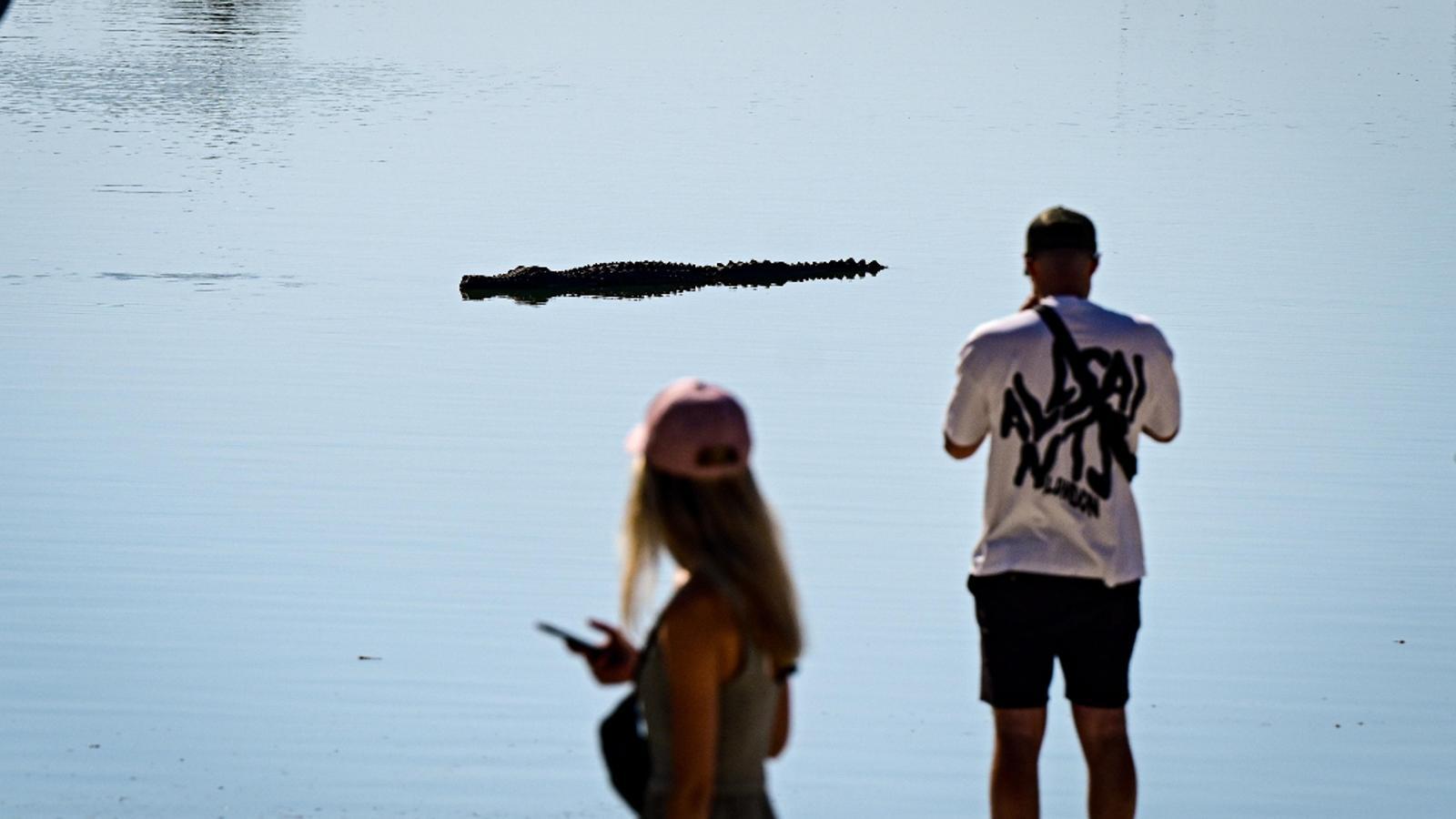A crocodile in Palma surprises tourists
This is a sculpture of the Coca dragon

PalmTourists visiting Palma these days stroll through the Parque de la Mar park in surprise when they spot a crocodile in the small lake next to Mallorca Cathedral.
Some think it's alive, expressing surprise at the discovery and photographing it. But it's actually the Coca dragon, a work by artist Ricard Chiang installed a few days ago in the lake, which recalls a legend of the city. The garment, three meters long and weighing about 150 kilos, is made with a special mortar resistant to seawater.
The work is empty inside, allowing it to float stably, and it has been anchored with stainless steel chains to secure its fixation to the lake.
The Coca dragon is a legendary creature from Palma, whose history dates back to the 17th century. According to legend, it was a ferocious dragon that lived in the sewers near Carrer de la Portella and in the Jewish quarter of Call and that terrorized the inhabitants, coming out at night and causing disappearances, especially of children and homeless people. It sowed terror in the city.
The story goes that Captain Bartomeu Coch, a noble military man from Palma, encountered the creature one night when he was going to see his beloved. After a confrontation, he killed it and presented its body as a trophy and a token of bravery and love.
However, the creature wasn't actually a dragon, but a crocodile of African origin that had likely arrived in the city on a ship and grown in Palma's Arab underground passages. The animal was eventually embalmed and has since been housed in Palma's Diocesan Museum. It has become one of the city's best-known folkloric myths and symbols.
Now, surprisingly, a representation of it can be seen by tourists strolling this summer by the saltwater lake at the foot of the Cathedral.
